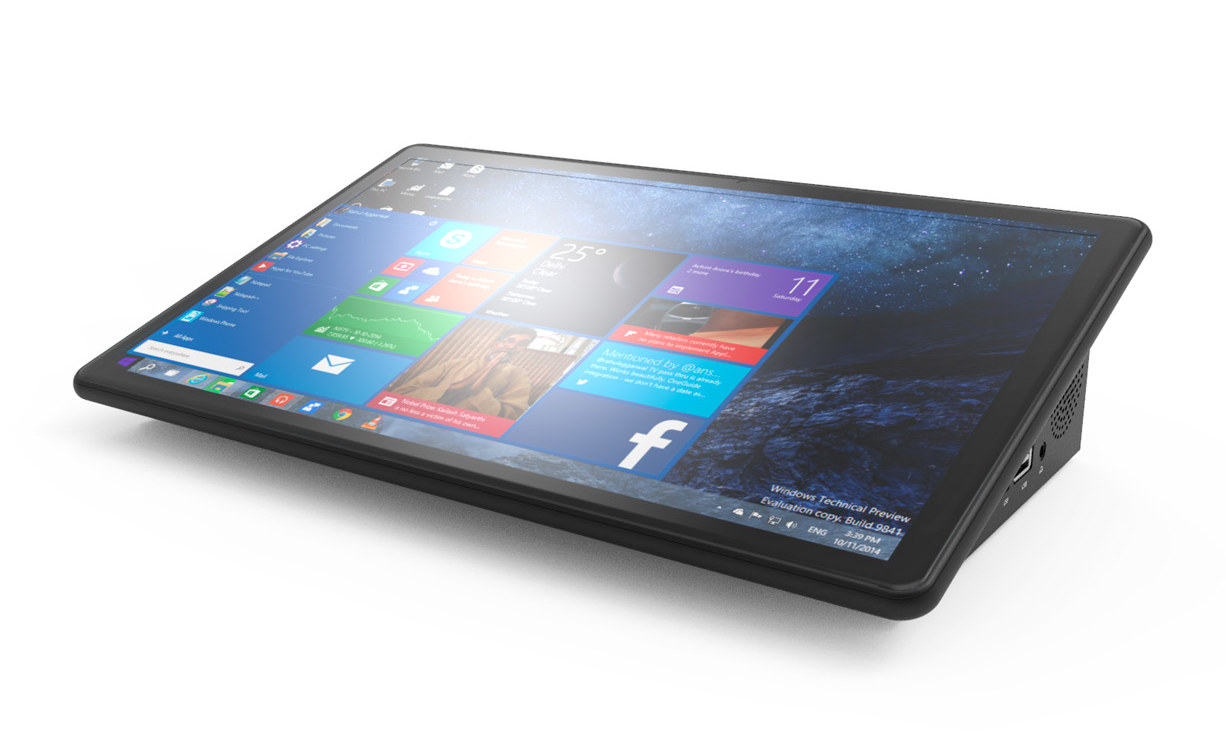We’ve previously reviewed a few unusual mini PCs and tablets from Shenzhen Qianhai Gole Technology Co., Ltd – better known as just GOLE – such as GOLE F7 rugged tablet very recently, and before that some mini PCs with built-in display as GOLE 10.
The company has now come up with an update to the latter with a more powerful Apollo Lake processor. HiGole F11APL comes with a slightly larger 11.6″ touchscreen display, but the Intel Celeron N3450 processor combined with 4GB RAM and 64GB eMMC flash storage will provide much better performance than the previous Cherry Trail-based solution.

HiGole F11APL specifications:
- SoC – Intel Celeron N3450 quad-core Apollo Lake processor @ 1.1 GHz / 2.2 GHz (Burst frequency) and 12 EU Intel HD Graphics 500 @ 200 MHz / 700 MHz (Burst freq.); 6W TDP
- System Memory – 4GB LPDDR4
- Storage – 64 GB eMMC flash, micro SD slot up to 128 GB, support for M.2 SSD
- Display – 11.6″ capacitive touchscreen display with 1920 x 1080 (FHD) resolution; 5-point touch
- Video Output – HDMI 1.4 port
- Audio – HDMI, 3.5mm audio jack, built-in stereo speakers
- Connectivity
- Gigabit Ethernet port
- Dual-band 802.11 b/g/n/ac WiFi 5, and Bluetooth 4.0.
- Optional 4G LTE module
- USB – 2x USB 2.0 host ports, 2x USB 3.0 ports
- Serial – 3x RS-232 DB9 ports supporting full-duplex communication, 1x RS-485 DB9 port
- Misc – Power switch, volume buttons, optional CMOS reset button (internal via pinhole)
- Power Supply – 12V DC/2A
- Battery – None, mains powered only.
- Dimensions – 293x177x39.4mm
- Weight – Around 1.2 kg

Gole informed CNX Software the device will become available on the company’s Alibaba store on the 20th of March with pricing starting at $199 for the “basic” version.

Jean-Luc started CNX Software in 2010 as a part-time endeavor, before quitting his job as a software engineering manager, and starting to write daily news, and reviews full time later in 2011.
Support CNX Software! Donate via cryptocurrencies, become a Patron on Patreon, or purchase goods on Amazon or Aliexpress




